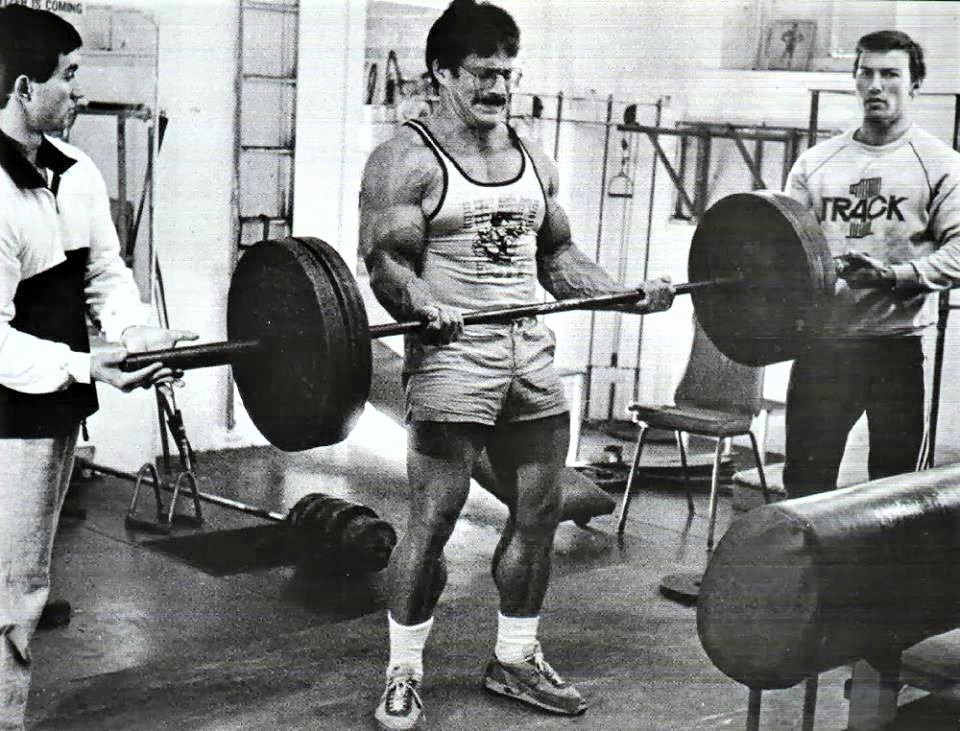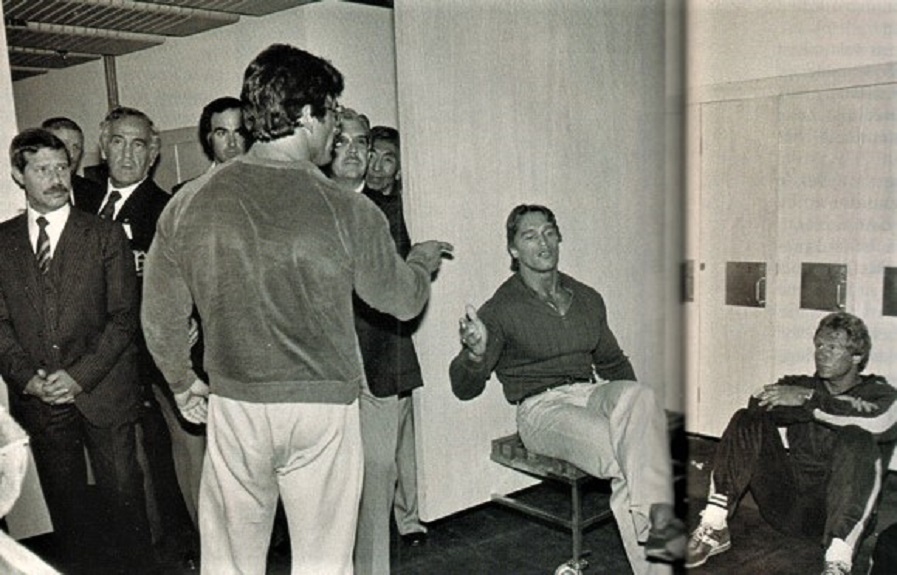Mike Mentzer: A Bodybuilding Revolutionary – His Life, Heavy Duty Training, and Lasting Influence
Mike Mentzer was more than just a competitive bodybuilder—he was an intellectual, a revolutionary, and someone who dared to challenge the status quo in the world of bodybuilding. Known for his groundbreaking Heavy Duty training philosophy, Mentzer's approach emphasized quality over quantity, leading to heated debates that still resonate in gyms today. But beyond the controversy, Mentzer left a lasting legacy, influencing not only his contemporaries but also future bodybuilding champions like Dorian Yates.
In this deep dive, we'll explore the life and career of Mike Mentzer, the structure of his revolutionary Heavy Duty training system, his relationships with key figures in the bodybuilding world, and how his ideas influenced modern training methods. Mentzer’s journey—from his early bodybuilding days to his untimely passing—offers valuable insights into the evolution of the sport.
The Life of Mike Mentzer: From Humble Beginnings to Bodybuilding Icon
Born on November 15, 1951, in Ephrata, Pennsylvania, Mike Mentzer was introduced to bodybuilding at the age of 12. Like many young men of his generation, Mentzer was captivated by the physiques of classic bodybuilders like Steve Reeves and Bill Pearl. Mentzer's early obsession with training led him to devour every piece of literature he could find on bodybuilding, and it was during these formative years that his critical, analytical nature began to take root.
Mentzer's first major competition came in 1971, where he placed 10th in the Mr. America contest. This humble placing might have discouraged most athletes, but Mentzer's commitment to improving his physique drove him to the top of the sport within just a few years. By 1976, Mentzer had won the Mr. America title with a perfect score, setting the stage for his ascension in the bodybuilding world.
But it wasn’t just his physique that made Mentzer stand out. Mentzer was a philosophical thinker, heavily influenced by Ayn Rand and her philosophy of Objectivism. He believed in rational thought, individualism, and the pursuit of personal excellence—all values that he applied to his bodybuilding training. These beliefs eventually led to the development of his controversial training system, which he called Heavy Duty.
Heavy Duty Training: Mike Mentzer’s Controversial Philosophy
In the world of bodybuilding, where most athletes were training for hours each day with high-volume routines, Mentzer’s Heavy Duty training approach was a radical departure from the norm. Heavy Duty was based on the idea that muscles could be stimulated to grow with just a few intense sets performed to failure, rather than through endless reps and exercises.
According to Mentzer, the key to building muscle wasn’t the quantity of sets, but the intensity of effort. He believed that after one set performed to absolute failure, the muscle had received enough stimulus to grow and didn’t need further work. This theory challenged the high-volume training routines favored by bodybuilders like Arnold Schwarzenegger, who often spent hours each day in the gym.

Key Elements of Heavy Duty Training:
- Low Volume: Mentzer advocated for only one or two working sets per exercise, performed to absolute failure.
- High Intensity: Every set had to be performed with maximum effort, ensuring that the muscle was fully stimulated.
- Recovery Time: Mentzer argued that the body needed more rest than most bodybuilders allowed, often suggesting 48 hours or more between workouts for the same muscle group.
- Short Workouts: Mentzer’s training sessions typically lasted 30-45 minutes, far shorter than the two- to three-hour marathons most bodybuilders performed.
An Example Heavy Duty Workout Routine
Here’s a sample of what a Heavy Duty chest and back workout might look like, based on Mentzer’s principles:
- Chest:
- Incline Barbell Bench Press – 1 set to failure (8-10 reps)
- Flat Dumbbell Bench Press – 1 set to failure (8-10 reps)
- Chest Dips – 1 set to failure (6-8 reps)
- Back:
- Pull-Ups – 1 set to failure (6-8 reps)
- Bent-Over Rows – 1 set to failure (8-10 reps)
- Deadlifts – 1 set to failure (6-8 reps)
Each exercise was performed with a slow, controlled tempo to maximize time under tension and to push the muscle to its absolute limit. Once failure was reached, no additional sets were needed—Mentzer believed the muscle had already received sufficient stimulus to grow.
Relationships with Other Bodybuilders: Mentzer and Arnold
While Mentzer’s Heavy Duty training earned him a loyal following, it also led to some high-profile conflicts—most famously with Arnold Schwarzenegger. In the 1980 Mr. Olympia contest, Mentzer and Arnold went head-to-head in what has become one of the most controversial decisions in bodybuilding history.
Many fans and analysts believed Mentzer deserved the title that year, with his more balanced, symmetrical physique appearing superior to Arnold’s. However, Arnold was awarded the win, securing his seventh Mr. Olympia title. This decision sparked controversy and fueled a long-standing rivalry between Mentzer and Arnold, who disagreed not just on bodybuilding aesthetics but also on training philosophy. Mentzer never competed in Mr. Olympia again after that loss, focusing instead on spreading his Heavy Duty philosophy.

Mentzer and Dorian Yates: The Influence on Modern Bodybuilding
While Mike Mentzer never won a Mr. Olympia title, his training philosophy lived on through the work of Dorian Yates, who went on to become one of the most dominant bodybuilders of the 1990s. Yates credited Mentzer’s Heavy Duty principles for transforming his training and helping him win six consecutive Mr. Olympia titles from 1992 to 1997.
Yates, known for his incredible size and conditioning, adopted a modified version of Heavy Duty, reducing the number of sets and focusing on pushing each set to failure. He believed that this high-intensity approach allowed him to build the mass necessary to dominate the competition while also preventing overtraining. In many ways, Yates was the embodiment of Mentzer’s philosophy, showing that low-volume, high-intensity training could produce world-class results.

The relationship between Mentzer and Yates helped legitimize the Heavy Duty approach for a new generation of bodybuilders, and Yates’ success on the Olympia stage proved that Mentzer’s ideas were more than just theoretical—they were practical and effective at the highest levels of competition.
The Later Years and Mentzer’s Legacy
After retiring from competitive bodybuilding, Mike Mentzer focused on promoting his Heavy Duty philosophy through seminars, books, and training programs. He became a popular figure in the bodybuilding community, known for his intellectual approach to training and his willingness to challenge conventional wisdom.
Unfortunately, Mentzer’s later years were marred by personal struggles. He battled health issues and depression, and on June 10, 2001, Mike Mentzer passed away at the age of 49 due to heart complications. His death was a tragic loss for the bodybuilding community, but his ideas lived on through the athletes he influenced and the many fans who adopted his Heavy Duty approach.
Forge App: Bringing Heavy Duty to the Modern Athlete
While Mike Mentzer is no longer with us, his revolutionary training system continues to inspire bodybuilders around the world. And now, with the upcoming launch of the Forge App, you’ll be able to experience workout plans inspired by Mentzer’s Heavy Duty principles.
The Forge App will offer high-intensity, low-volume workout programs designed to push your muscles to their limits in just a few sets. You’ll have the opportunity to train with the same intensity that defined Mentzer’s career while tracking your progress and ensuring optimal recovery.
If you’re ready to break free from the conventional high-volume training models and push yourself to new heights, the Forge App is your next step. Stay tuned for its release and get ready to embrace a new era of intensity-driven bodybuilding.

